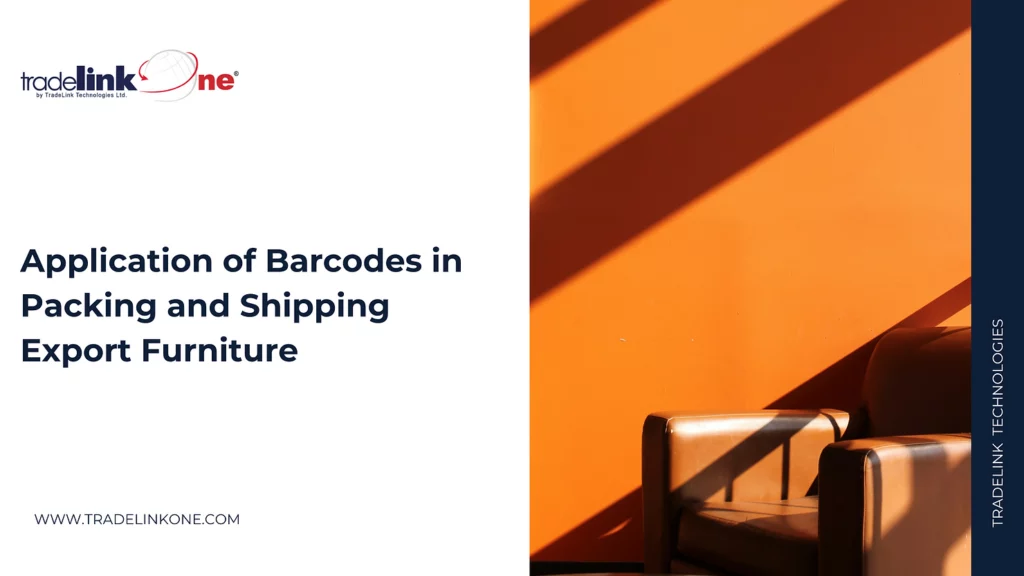
The furniture industry in Vietnam is experiencing strong growth, especially as the country becomes one of the leading manufacturing hubs for major furniture brands. Vietnam is the world’s 6th largest furniture manufacturer (*), and the demand is expected to increase in the coming years. The industry’s growth demands international-standard production and shipping processes, particularly when exporting to major markets such as the U.S., EU, and Japan.
In this context, an increasing number of factories are opening, making the market more dynamic than ever. Brands favor factories with transparency in data, accurate and timely updates, and reliable systems. As a result, besides producing high-quality and stable products, factories also face the challenge of standing out among many competitors both domestically and internationally.
1. Barcodes Support the Packaging Process to Meet Standards
The process of packaging furniture products is not just about putting items into boxes, but requires precision and adherence to standards to ensure goods are not damaged during transport. Barcodes are an ideal solution to meet these requirements and offer several benefits:
- Accurate Packaging: During the packing process, workers scan the barcode on each item to determine which box the product belongs to, according to the available packing list. This ensures that products are packaged correctly according to the customer’s requirements, reducing the risk of errors during shipping. Barcode verification also helps prevent the wrong product from being shipped or items being left out.
- Ensuring Correct Quantities: After packing, software checks the quantity of goods in each box to ensure the correct and complete number of items. If there is any discrepancy (either shortage or excess), the system will immediately alert the user and prevent printing the packing label. Only when all information matches, will the label be printed and affixed to the box, ensuring the highest level of packaging accuracy.
- Automatic Data Updates: Information about packaging and order status is automatically updated in the system. This supports managers in easily tracking progress and the status of goods, allowing for timely decisions. With customizable reports, managers can assess the efficiency of the production process and make adjustments if any issues arise.
- Preventing Theft: Before goods are loaded into containers for transport, they are re-weighed to ensure no losses or discrepancies during storage. This step is crucial for protecting company assets and maintaining customer trust.
These factors help Vietnamese furniture businesses build trust with international customers and establish a strong position in the export market.
2. Barcodes in Raw Material and Inventory Management
One of the major challenges for furniture manufacturers is managing raw materials and inventory. Barcodes make this process more efficient and time-saving through features such as:
- Tracking In/Out of Inventory: Every time goods are entered or shipped out of the warehouse, barcodes are scanned to update the system in real-time. This data helps calculate and forecast the raw materials needed for production, as well as reducing costs related to damaged inventory.
- Quick Location of Goods: With barcodes, warehouse staff can easily locate and identify the position of each product, from boxes and pallets to individual items. This helps save time and effort when searching for and counting items, improving warehouse staff efficiency and reducing the risk of inventory loss.
3. Barcodes Enable Easier and More Effective Supply Chain Management
Barcodes also help companies manage their supply chains more effectively, ensuring that processes from production to shipping are closely monitored and meet international standards:
- Automated Packaging Process and Compliance with Standards: With barcode software support, factories can receive orders, complete packaging processes as per customer requirements, and easily print necessary documents such as ASN (Advanced Shipping Notice), packing lists, and shipping status reports. This streamlines the export process, making it faster and more accurate while minimizing errors in packaging and shipping.
- AI-Assisted Packaging: TradeLink has integrated artificial intelligence (AI) into the automated packaging process to ensure that packaging and shipping steps are always highly efficient. AI optimizes workflows, reduces worker time and effort, and increases accuracy in packaging.
—–
About TradeLink
With over 25 years of experience in supply chain technology, TradeLink has become a trusted partner for large enterprises in the retail, apparel, and now furniture industries. TradeLink’s barcode solutions help businesses manage goods efficiently, reduce costs, and enhance competitiveness in the international market.
(*)According to data published by the CSIL (Center for Industrial Studies) based in Milan (Italy), at the “Furniture and Wood Forum” held during the Hawa Expo 2024 in Ho Chi Minh City.
